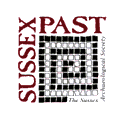Sussex Archaeological Collections: Relating to the history and antiquities of the counties of East and West Sussex
Sussex Archaeological Society, 2000. (updated 2022) https://doi.org/10.5284/1000334. How to cite using this DOI
Data copyright © Sussex Archaeological Society unless otherwise stated
This work is licensed under the ADS Terms of Use and Access.
Primary contact
Jaime
Kaminski
Sussex Archaeological Society
Barbican House
169 High Street
Lewes
BN8 1YE
Resource identifiers
- ADS Collection: 285
- DOI:https://doi.org/10.5284/1000334
- How to cite using this DOI
Exploration of the Sussex coastal plain through time: excavations at Titnore Lane, Goring-by-Sea, West Sussex
by CHRIS CLARKE
Excavations undertaken by AOC Archaeology Group in 2008 at Titnore Lane, Goring-by-Sea, West Sussex revealed evidence for activity on site spanning from the Mesolithic through into the modern period, with only the Anglo-Saxon period not represented. The earliest activity was associated with the Mesolithic and Early Neolithic periods and consisted of a small number of scattered features and a dispersed finds assemblage. By the Middle Bronze Age the first signs of intensive exploitation of the coastal plain were identified in the form of a trackway and associated pits. There was a greater concentration of activity on site in the Late Bronze Age to Early Iron Age period; evidence of a small dispersed settlement was found which incorporated a roundhouse, a livestock pen and several pits. Continuity in activity continued into the Middle to Late Iron Age periods, represented by an unenclosed nucleated settlement consisting of several phases of roundhouse construction with an associated large artificial pond and possible workshops. In a further phase of continuity, the Late Iron Age settlement was replaced by an early Roman field system and general activity associated with Goring Roman Villa, located a short distance to the south of the site. Romano-British activity continued into the 2nd century ad before the site was abandoned by the mid 2nd century ad. This hiatus lasted until the 12th century, at which point a large enclosure and a ditch system were created, which were in use up to the 14th century. A limited number of post-medieval and modern features were present, which primarily represented the agricultural use of the site over the past few hundred years.





